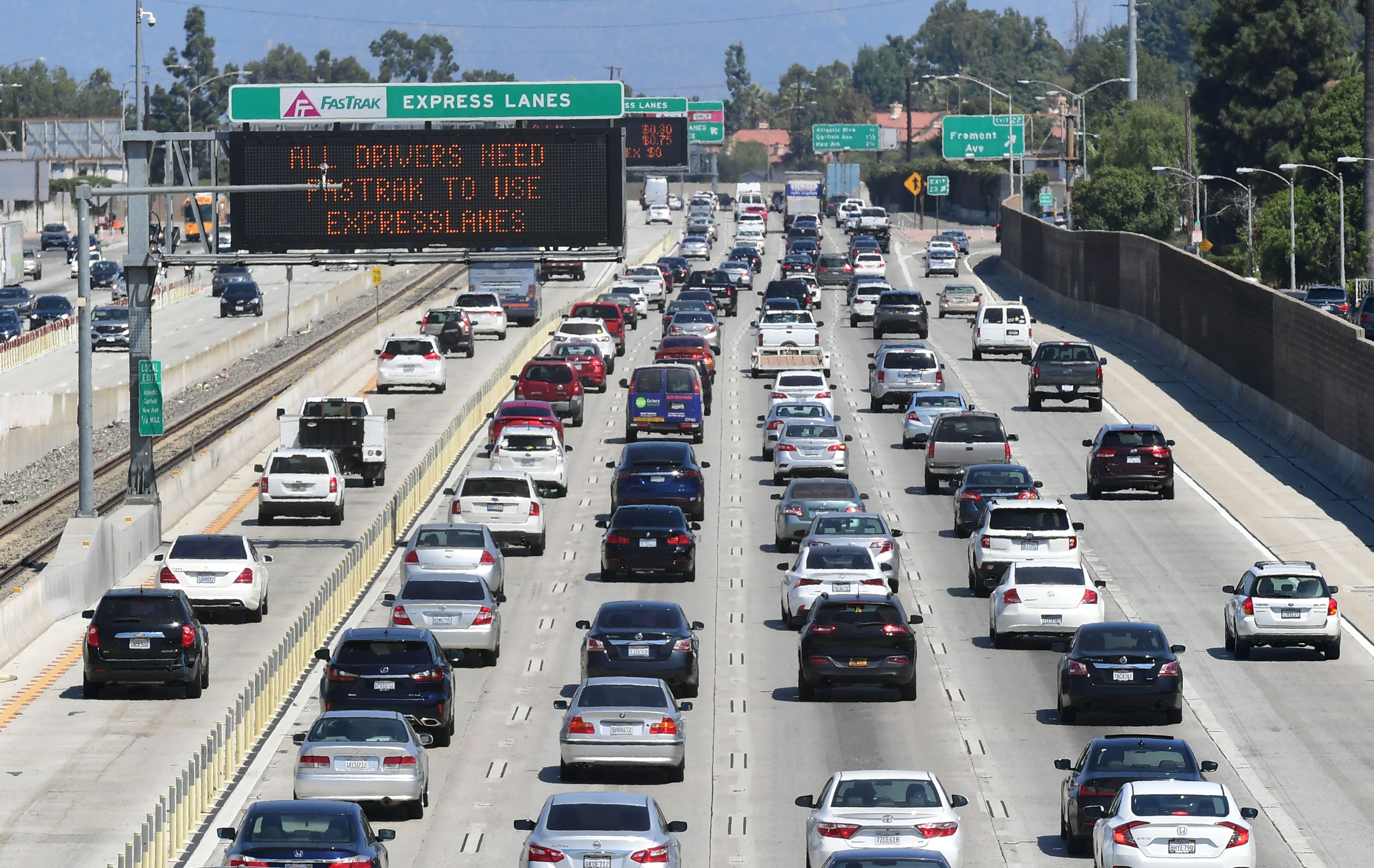Dozens of dead fish have been spotted at a South Bay pond that is drying up, possibly from the drought or because it's being drained into an aquifer.
The fish were spotted near the last bit of water at one of the Guadalupe Recharge Ponds in South San Jose.
Lisa Landry saw the sad sight after working as a volunteer to distribute food at a nearby homeless encampment. She shot some video, capturing the fish and her anguished reaction.
"I just thought, ‘Oh my goodness, this can’t be happening. Somebody has to save the fish. Somebody has to care that there’s no water in the park ponds.' It’s just a multitude of things that I was feeling," she said.
Get top local stories in Southern California delivered to you every morning. >Sign up for NBC LA's News Headlines newsletter.
The Santa Clara Valley Water District said the ponds are not necessarily dry from the effects of the drought but from water being moved to an aquifer. A full statement from the district can be viewed below.
Upon seeing pictures of the dead fish, officials said the fish appear to be carp, a non-native fish. As the district said in a statement, they are not rescued because they compete with and prey upon native fish.
Landry said she’s still concerned about the fish remaining in the other ponds.
California
News from across California
"Without being a professional here, that water will also ultimately go away, so there’s an opportunity to save the fish that are ultimately going to die as well," she said.
With resources stretched to the limit already with the drought, rescuing non-native fish is probably not going to be a high priority.
The agency pointed out it has many programs to rescue native fish, but even that is limited since permits are often needed.
Full statement from the Santa Clara Valley Water District:
Santa Clara County is in an extreme drought. Rainfall has been well below average for the past two years, reducing reservoir storage, which feeds the creek systems. There is not enough local water in the Reservoir to keep the creeks flowing through their entire length. Valley Water has worked with the California Department of Fish and Wildlife to make water release decisions to maintain as much of the creek areas wet as possible for the longest duration. The dry back you see is currently isolated to the lower reaches, but the flow is available further upstream. Attempts are being made to maintain the habitat for Central California Coast Steelhead and other native fish with the limited water available. Valley Water conducts fish rescues when necessary for specific projects and only when the permits and resource agency approvals are in place.
Valley Water does not have permits and they often are not issued to conduct fish rescues due to drought. Also, there are not necessarily better places to relocate rescued fish, as the entire creek system is experiencing reduced flow. Relocating/rescuing fish can further stress the overall fish populations, as well as spread invasive species, disease, and pathogens. Luckily, our native fish species are adapted to periods of drought, and many respond to drying or warming waters by moving to wetter and cooler areas. Many of the fish that appear to need rescuing are non-native species that compete with and prey upon native fish.
During the drought, Valley Water is committed to delivering safe, clean water from our drinking water treatment plants to local water providers and municipalities and maintaining healthy groundwater basins for residents and retailers that depend on groundwater pumping to meet their demands. Valley Water will continue to work with local, state, and federal regulatory partners to coordinate drought impacts on fish and wildlife while conducting water supply operations and maintenance activities in the most environmentally sensitive manner possible.



